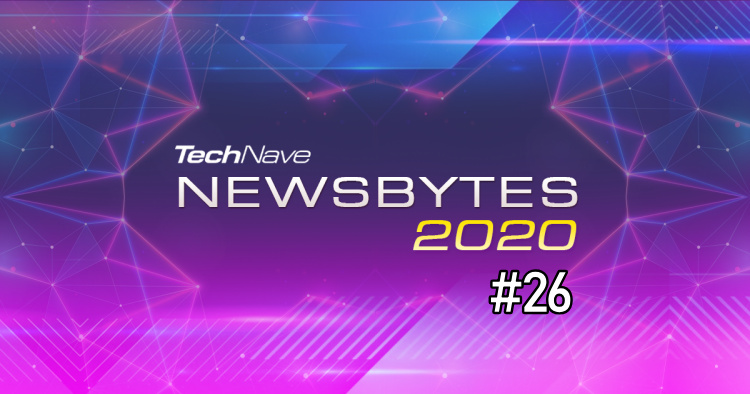
Welcome back TechNavers and NewsByters, in this issue of TechNave NewsBytes 2020 #26, Huawei announced key Milestones Achieved with its Local Partners during the HUAWEI Developer Conference 2020, Lenovo announced their ThinkCentre’s smallest ever desktop and their Lenovo ThinkVision M14t Mobile Monitor.
Maxis adopts Google Cloud, AMD President and CEO Dr. Lisa Su to Keynote at CES 2021, AMD COVID-19 HPC Fund assists researchers fighting COVID-19 and ARMARI announced a new world record with the AMD Ryzen Threadripper 3990X-powered Magnetar X64T in the official Specworkstation v3.0.4 benchmark.
TikTok launched their inaugural #ItStartsOnTikTok campaign on 15 September 2020 while for this issue’s Special, we have: 12 steps for the ultimate Netflix movie viewing experience.
For Misc Announcements:
- Alibaba Debuts Cloud Computer, Delivery Robots at Cloud Computing Conference
- Lazada Smashes 9.9 Sales Record
- Kaspersky: Oversharing: what is ok to share in the internet and what is not
- Tencent Strengthens Industrial Digitalisation Strategy to Boost Economic Recovery in Post-pandemic Era
- First Two-Hour Online Shopping Traffic Increased Compared to 2019
HUAWEI ANNOUNCEMENTS
HUAWEI Showcases Key Milestones Achieved with its Local Partners During HUAWEI Developer Conference 2020
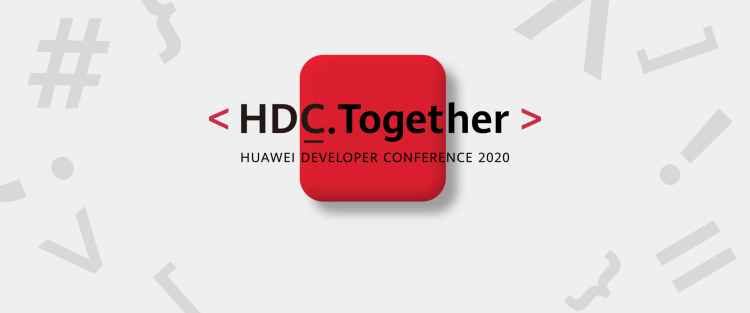
HUAWEI Consumer Business Group held its annual HUAWEI Developer Conference (HDC) 2020 themed "HDC · Together" from 10 to 12 September 2020 in Songshan Lake, Dongguan to announce the technical upgrades and development progress of HUAWEI Mobile Services (HMS) ecosystem. During the ‘Grow with HMS Best Practices’ virtual global tech session, five app partners from Asia-Pacific (APAC) were invited to present key milestones that they've achieved in collaboration with HUAWEI towards building a "Seamless AI Life".
The HMS ecosystem has achieved rapid growth globally. As of September, there are 1.8 million registered HUAWEI Developers worldwide to continuously create apps through HMS open capabilities. Since its global launch in April 2018, the HUAWEI AppGallery has now successfully attracted 490 million monthly users across 170 countries and achieved 261 billion app downloads within the first eight months of this year.
In growing the ecosystem, HMS have supported partners by tailoring the co-marketing campaign based on the app's unique selling points and local preferences.
In the Philippines, HMS collaborated with Kumu livestreaming app to launch the "Mother's Day"-themed campaign in May. The mechanics entailed viewers to purchase virtual HUAWEI products such as HUAWEI P40 and smartwatch through Kumu's livestreams and send them as gifts to support their favourite live streamers' leaderboard standings.
The livestream videos broadcasted under this campaign had successfully reached more than 1 million users. After the two-week campaign, Kumu's paid users increased by 220%, and in-app purchases grew by 40 times.
Early this year, HUAWEI have set up technical teams in key APAC markets to assist app developers on the HMS app integration process. In Thailand, Wongnai and LINE MAN have integrated with HMS Core kits to be part of the HUAWEI ecosystem.
Established since 2010, Wongnai is one of the leading lifestyle apps focusing on the food and beverage industry and it owns the largest restaurant database in Thailand.
HUAWEI smartphone users are accounted for the second-largest of Wongnai Android users. The app took three weeks to integrate with HMS Core Kits and launched onto the HUAWEI AppGallery in March.
On the other hand, LINE MAN, the on-demand delivery service app covering taxi-hailing, messenger, parcel delivery and more, was newly onboarded into the HUAWEI AppGallery in June.
The location-focused app decided to first integrate with HMS Map Kit and Location Kit. To ease the future app maintenance, LINE MAN also added a set of logic APIs into the app, to make it run smoothly on HMS devices and other mobile services.
HMS also provides hybrid, multi-platform distribution across the ecosystem for its partners to reach out to a larger user pool.
Star Media Group (SMG), a multi-channel media group based in Malaysia, onboarded all of its six applications including The Star, Star ePaper, Star Property, Kuali, 988, and Dimsum Entertainment into the HUAWEI AppGallery in October 2019. Additionally, SMG had also connected to 'HUAWEI Ability Gallery’ (HAG) capabilities to make its content services available through HUAWEI Video and HUAWEI Assistant∙TODAY.
SMG also newly implemented the HUAWEI Ad kit in their applications to start monetizing the in-app traffic.
HUAWEI Ads enable app developers to monetize the in-app traffic by placing advertisement in their apps and allow advertisers to tap into HUAWEI device’s broad user base. HUAWEI has been actively engaging with the GroupM advertising group to pilot the HUAWEI Ad service to spearhead it in the Malaysia market.
To watch the full video, please visit their site.
LENOVO ANNOUNCEMENTS
Lenovo ThinkCentre’s Smallest Ever Desktop Serves Up AMD Power, ThinkCentre M75n and M75n IoT Nano form factor desktops available now
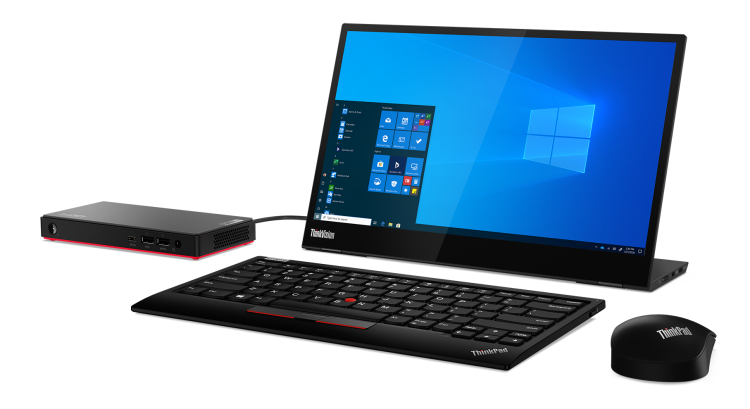
Lenovo, recently announced its latest ThinkCentre ultra-small form factor “Nano” desktops. The 350ml ThinkCentre M75n is the smallest desktop in the ThinkCentre portfolio and is perfectly suited to respond to the ways and spaces in which people now work. Powered by AMD Ryzen™ PRO processors, with solid state storage and Windows 10, the M75n delivers powerful desktop performance and robust security helping users accomplish their daily tasks.
The ThinkCentre M75n IoT is an intelligent edge computing device with powerful AMD Athlon™ processors that can protect, collect, analyze and interpret real-time data from multiple sources helping businesses optimize production or maximize efficiencies.
ThinkCentre M75n features options that are proven to boost employee productivity, like Modern Standby, which allows users to receive emails, Voice over IP calls, and instant messages while the device is in standby mode and then rapidly resumes to full function.
Even though it’s only 22mm thin, ThinkCentre M75n doesn’t sacrifice connectivity for size. It has all the ports users need to stay connected to peripherals, networks, and accessories. Users can also connect to two displays for multitasking, plus a full-size keyboard and mouse, headphones, and more. A USB Type-C port located on the front panel offers fast charging of compatible devices and quick data sharing.
Today’s desktops need a flexible purpose. The M75n can be mounted anywhere with the appropriate accessories — on the wall, behind a monitor, under the tabletop. Or keep it free for ultimate grab-and-go portability. Weighing just 505 grams, the M75n is a portable workhorse enabling easy transition from office to home for maximum productivity Simply connect ThinkCentre M75n to an external keyboard, mouse and up to two displays for a multi-monitor, ergonomic, full desktop computing experience.
Ideal for integrating into warehouse, retail and healthcare edge computing environments, the ThinkCentre M75n IoT supports WiFi and Bluetooth®, wireless connections to efficiently transport data to the cloud or data center. It can also serve as a dedicated ThinClient for the perfect Work-From-Home platform that can be securely deployed and managed remotely as a cloud based or desktop as a service model. In order to support the Edge compute and ThinClient solutions, the M75n IoT supports a variety of OS options and maintains built-in driver support for older OS versions to ensure backwards compatibility.
The previously announced ThinkCentre M90n is also now available with 4G/LTE WWAN for enhanced high-speed connectivity in more remote locations. As integral devices within Lenovo’s SmartEdge solutions framework, the Nano IoT desktops can process and interpret data from multiple sources (sensors, inverters, sirens, displays, cameras, and more) efficiently and send only what matters to the cloud or data center with reduced latency.
Furthermore, ThinkCentre devices protect critical data and business processes with the reinforced security of ThinkShield solutions. ThinkCentre Nano desktops have built-in security features, such as a dTPM 2.0 chip, Smart USB protection, individual USB port disablement, and a chassis intrusion switch, plus many more security features that can be customized to meet your unique needs.
For those who are interested, you may reach out to Lenovo Exclusive Stores (LES) for a quote. Pricings are as below -
- ThinkCentre M75n’s starting price is at RM2,399.
- ThinkCentre M75n IoT’s starting price is at RM2,199.
- ThinkCentre M90n IoT’s starting price is at RM1,399.
Visit their site for more information.
Lenovo ThinkVision M14t Mobile Monitor Brings a Touch of Inspiration to Flexible Working
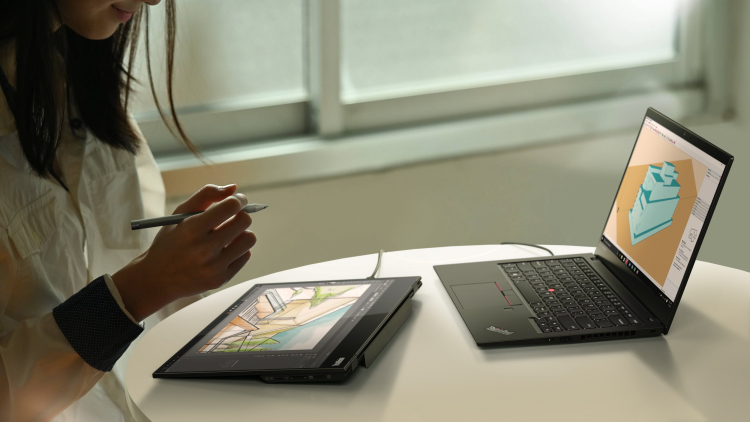
Lenovo recently announced its latest mobile monitor, the ThinkVision M14t. The new display brings a sleek modern design for users to extend their screen real estate while adding touch interaction with their device. The slim and light portable monitor weighs just 698 grams1 and provides a 14-inch Full-HD touch-enabled display.
Ten-point touch functionality and 4096 pressure level active pen support empowers users to unleash their creativity by enjoying the freedom to design, animate, present and annotate. The pressure-sensitive pen enables more precise sketching and accurate navigation.
An improved user experience for mobile and remote workers includes pivot support for portrait and landscape formats with the included L-shaped dongle offering a simple cable solution, and two full function USB Type-C ports for complete flexibility.
Enhancing the successful M14 model, the new monitor delivers extra functionality to offer greater flexibility and user interaction by adding touch capability to non-touch laptops or extending touch in collaboration with touch-enabled laptops. Add the M14t with its included active pen and dedicated sleeve to any USB-C enabled ThinkPad laptop or other compatible USB-C devices for a true mobile workspace.
Built for mobile professionals who are adapting to a new era of flexible working, the M14t becomes the perfect companion for users who need to vary their workplaces. The crisp and accurate visuals with 300 nit brightness capability and impressive viewing angles make it ideal for presentations or managing multiple content windows across two displays. The tilt function and height adjustment ensure the most comfortable viewing position and TÜV Rheinland Low Blue Light technology lets users work with minimal eye strain.
Touch is one of our most familiar sensations and we seek interactive experiences with intuitive input. The active digital pen that supports 4096 levels of pressure offers unmatched precision when it comes to drawing, sketching and collaborating.
Switching the view from annotating a presentation in landscape mode to digitally signing a document or contract in portrait mode is made very simple thanks to auto-rotations sensors that do not require additional software or driver installation. Additionally, an intuitive on-screen display menu enables easy access to brightness, contrast and rotation settings.
This compact USB-C Hub monitor with two USB-C ports works seamlessly not only with Lenovo ThinkPad family laptops but also with other compatible USB-C devices. The M14t monitor offers ease of use, especially while working on the go. Connect, create, present and pitch, with conviction on the M14t wherever you are.
ThinkVision monitors are built on uncompromised Think brand quality and Lenovo’s engineering legacy that ensure performance and reliability. Innovative USB-C Hub Monitor Display Solutions empower employee’s productivity and optimize their working experience. Whether working from home, office or on the road, ThinkVision has a display solution to set everyone’s needs.
Here are some highlights from the extensive portfolio:
- The New ThinkVision P32p-20 offers superior performance for everyday productivity. A 31.5-inch IPS (In-Plane Switching) display with UHD resolution and 3-side near edgeless bezels, makes working on the P32p-20 a treat. Experience seamless collaboration in any workspace on this USB-C Hub Monitor that’s packed with connectivity options and deliver maximum flexibility. Enjoy secure and high-speed network performance with an Ethernet connection via USB-C, and breeze through everyday tasks with greater efficiency. The fully adjustable stand, TÜV Rheinland Eye Comfort certification and cable management solution minimizes strain and fatigue enabling effortless working for extended periods.
- Announced at CES 2020 and shipping shortly, the ThinkVision P27h-20 boasts a four-side near edgeless QHD display that offers a premium, functional and ergonomic experience. The 27-inch anti-glare monitor includes Smart Power technology and a full-function USB Type-C one cable solution with up to 90W power delivery and Ethernet passthrough.
- Also announced at CES 2020 and shipping soon, the immersive ThinkVision T34w-20 is designed for maximum productivity and makes multitasking a breeze. The 21:9 format 1500R curved panel allows users to carry out complex tasks requiring an ultra-wide display such as large spreadsheets and number crunching or multiple documents simultaneously. Smart Power technology efficiently manages power delivery and the one-cable solution, cable management and tilt and lift capability ensure a complete ergonomic viewing experience.
For those who are interested, you may reach out to Lenovo Exclusive Stores (LES) for a quote. Pricings are as below –
- ThinkVision M14t’s starting price is at RM1,399.
- ThinkVision P32p-20’s starting price is at RM2,399.
- ThinkVision P27h-20’s starting price is at RM1,499.
- ThinkVision T34w-20’s starting price is at RM2,599.
Visit their site for more information.
MAXIS ANNOUNCEMENTS
Maxis adopts Google Cloud to accelerate data analytics, AI and Machine Learning capabilities with 100% data on cloud ambition
Bringing together the best of technology to help people, businesses and the nation to Always Be Ahead in a changing world, Maxis has accelerated its data analytics capabilities to help deliver an Unmatched Personalised Experience for its customers.
Maxis is working with Google Cloud to integrate data analytics into every facet of its business – from consumers to enterprise, network, retail channels and employees. The company’s digital analytics transformation programme entails transitioning 100% of its business intelligence, data analytics and machine learning on-premise workloads to the cloud to deliver timely and secure insights, making Maxis one of the first in the Southeast Asian region to achieve this. At the same time, Maxis has also established its Big Data and Advanced Analytics and AI Center of Excellence with deep skilled data scientists and commitment programmes.
Initiated as the organisation’s Data Analytics cloud partner of choice, Maxis is leveraging the latest and best-in-class Artificial Intelligence and Machine Learning (AI/ML) innovation from Google Cloud, as well as a plethora of Google Cloud partners’ technology solutions. The platform’s scalable cloud platform provides a cost-effective approach for future expansion to support Maxis’ growing business needs, especially in managing the massive surge of data faster.
Google Cloud and Maxis will also work together to roll out a curated career development programme to build deep technical knowledge and in-house expertise, and significantly grow the number of Google Certified Data Engineers within the organisation.
Tapping on young minds with great potential, Maxis has brought onboard top tech graduates to its Young Talents development programme as it seeks to attract the best talent in Malaysia. Fostering a culture of innovation among the grassroots, Maxis is also collaborating with Google Cloud and other partners and academic institutions to grow deep skills in data to arm a future workforce in an accelerating Industry 4.0 era.
For more information, please visit their site.
AMD ANNOUNCEMENTS
AMD President and CEO Dr. Lisa Su to Keynote at CES 2021
The Consumer Technology Association (CTA) recently announced that AMD President and CEO Dr. Lisa Su will keynote during CES 2021, the world’s most influential technology event. Dr. Su will present the AMD (NASDAQ: AMD) vision for the future of research, education, work, entertainment and gaming, including a portfolio of high-performance computing and graphics solutions. This will be the first time the CES keynote series will be available in real time to registered attendees around the world.
CES 2021 will be an all-digital experience, extending the reach of this global event to existing and new audiences. Attendees will have a front row seat to the latest technology breakthroughs. Global brands and startups will launch the latest cutting-edge products. Thought leaders will share ideas that will shape the future. This new immersive experience will bring together the tech community.
Dr. Su has held the position of AMD president and chief executive officer since October 2014, and serves on the AMD Board of Directors. In 2014, she was chief operating officer responsible for integrating AMD’s business units, sales, global operations and infrastructure enablement teams into a single market-facing organization responsible for product strategy and execution. Dr. Su joined AMD in January 2012 as senior vice president and general manager, global business units and was responsible for driving end-to-end business execution of AMD products and solutions. Following a keynote at CES 2019, this will be the second time Dr. Su will present a CES keynote.
Dr. Su joins recently announced keynote speaker Verizon Chairman and CEO Hans Vestberg. The CES keynote schedule will be updated regularly as keynote speakers are announced. Top visionaries and thought leaders are expected to speak and share insights on premiere technologies during CES 2021.
Owned and produced by CTA, CES 2021 will be an all-digital experience connecting exhibitors, customers, thought leaders and media from around the world. CES 2021 will allow participants to hear from technology innovators, see cutting-edge technologies and the latest product launches, and engage with global brands and startups from around the world. For over 50 years, CES has been the global stage for innovation, and CES 2021 will provide an engaging platform for companies large and small to launch products, build brands and form partnerships. Visit CES.tech for all CES 2021 updates and the media page for all press resources.
AMD COVID-19 HPC Fund Adds 18 Institutions and Five Petaflops of Supercomputer Processing Power to Assist Researchers Fighting COVID-19 Pandemic
AMD (NASDAQ: AMD) recently announced a second round of high-performance technology contributions to assist in the global fight against the COVID-19 pandemic. AMD is now contributing high-end computing systems or access to Penguin-On-Demand (POD) cloud-based clusters powered by 2nd Gen AMD EPYC™ and AMD Radeon Instinct™ processors to 21 institutions and research facilities conducting COVID-19 research. With 12 petaflops of total supercomputing capacity now awarded, the combined compute capacity donated through the AMD COVID-19 HPC Fund would rank among the fastest supercomputers in the world according to the most recent Top500 list.
The AMD COVID-19 HPC fund was established to provide research institutions with computing resources to accelerate medical research on COVID-19 and other diseases. In addition to the donations of $15 million of high-performance computing systems, AMD has contributed technology and technical resources to nearly double the peak system of the “Corona” system at Lawrence Livermore National Laboratory which is being used to provide additional computing power for molecular modeling in support of COVID-19 research.
The second round of AMD-donated compute capacity is expected to be operational starting in Q4 of this year and will be used for a number of pandemic-related workloads including genomics, vaccine development, transmission science, and modeling. Research projects range from evolutionary modeling of the virus, to understanding the virus spike protein activation that occurs prior to first interaction between the coronavirus and human cell, and large scale fluid dynamics simulations of COVID-19 droplets as they travel through the air. To maximize the impact of the research, AMD is also initiating a working group for COVID-19 HPC Fund recipients and AMD engineers to jointly discuss research areas and findings as well as hardware and software optimizations that can accelerate their collective work.
To date, the AMD COVID-19 HPC fund has donated computing systems or cloud-based computing capacity to: Cambridge University, Carnegie Mellon, GENCI / French National High-Performance Computing Agency, Harvard Children’s Hospital, High Performance Computing Center (HLRS) / the University of Stuttgart, MIT, NYU, CSIR Fourth Paradigm Institute in India, Leibniz Supercomputing Centre (LRZ), Rice, Stanford School of Medicine, Texas State University, The University of British Columbia, The University of Texas at Austin, UCLA, University of Arkansas, University of Toronto, University of Trento, University of Vermont, Virginia Commonwealth University, and Washington University.
Gigabyte is supplying its G291-Z20 compute nodes for the Penguin Computing clusters, built around a single, 48-core AMD EPYC 7642 processor paired with eight Radeon Instinct™ MI50 GPU accelerators. The system R182-Z91 management nodes, also from Gigabyte, each utilize two 16-core, AMD EPYC 7302 processors.
ARMARI, a UK-based PC system integrator, announced a new world record with the AMD Ryzen Threadripper 3990X-powered Magnetar X64T in the official Specworkstation v3.0.4 benchmark.
The ARMARI Magnetar X64T powered by Ryzen Threadripper 3990X is able to achieve a 4.1GHz sustained all-core overclock, marking a significant uplift in performance.
You can find more information on the AMD blog, here.
TIKTOK ANNOUNCEMENTS
Culture, Moments, Talent, Trends – It All Starts On TikTok!
TikTok, is launching its inaugural #ItStartsOnTikTok campaign on 15 September 2020. The campaign celebrates the trends, stories, songs and conversations that started on TikTok and exploded into popularity, delivering cultural and social impact on and off-platform.
Since TikTok was launched, musicians have been discovered in the app, challenges have gone viral worldwide, users have experienced travel from the eyes of others, learnt the importance of safe online behavior, and celebrated cultural festivities together – the possibilities of what have started on TikTok are endless.
#ItStartsOnTikTok reinforces TikTok’s role as a platform where ‘culture’ is created by our community, users in Malaysia and throughout the world. From 15 September onwards, TikTok invites all Malaysian creators to share their TikTok journey with the community and how it has changed their lives!
MISC ANNOUNCEMENTS
Alibaba Debuts Cloud Computer, Delivery Robots at Cloud Computing Conference
Alibaba Cloud, the digital technologies and intelligence backbone of Alibaba Group, today unveiled a series of innovative products at its 12th annual Apsara Conference, highlighting the technology pioneer’s commitment in helping people adapt to the more digitized world and accelerate customers’ digital transformation during and after the pandemic.
A highlight is Alibaba Cloud’s first cloud computer, a palm-sized personal computer which, despite being just about 60 grams and as light as an egg, offers high-performance computing, thanks to robust back-end cloud resources. By simply connecting the cloud computer with a normal computer screen , a user can access almost unlimited computing resources anytime, anywhere, while paying on a subscription model or for the actual cloud consumption.
With robust computing power, the cloud computer can reduce the rendering time of one frame high-resolution animation from 90 minutes using a traditional PC, down to only 10 minutes. In addition, the cloud computer’s system upgrades are conducted online, saving a big chunk of the normally heavy cost of PC machine upgrades and maintenance in traditional office settings. Through Alibaba Cloud's self-developed app-streaming protocol, which is designed for synergy between the cloud and the device, users can also purchase and access licensed apps and programs such Linux and Windows as well as various office applications. All user data will be stored on cloud for datacenter-grade security and protection measures. Available initially for enterprise customers, the cloud computers will be also available for purchase by individual consumers in the near future.
Alibaba Cloud also unveiled its autonomous logistics robot for last-mile deliveries. Developed by the Alibaba DAMO Academy, the global research initiative by Alibaba Group, the delivery robot can carry 50 packages at one time and cover 62 miles (or 100 kilometres) on a single charge. It is estimated the mobile robot should be able to deliver as many as 500 packages a day to one designated community or campus, meeting the rising demand for speedy last-mile delivery in China. Online shopping is booming there, with 200 million packages delivered daily and expectations that will rise to 1 billion packages per day in the coming years.
Supported with reinforced learning technologies, the intelligent robot can schedule its route even in a crowded environment. With proprietary, high-definition positioning technology, the robot can operate even where there’s weak or no GPS signal. Leveraging a self-developed heterogeneous computing platform, 3D Point Cloud Semantic Segmentation (PCSS) technology and deep learning, the robot can also identify obstacles and predict the intended movement of passengers and vehicles a few seconds ahead of time to enhance safety.
Consumers can use either the Cainiao or Taobao mobile apps to select a preferred timeslot during the day for delivery. The robot then arrives at the designated destination, where users retrieve their packages simply by entering a passcode they receive in the app, once the robot arrives.
A slew of cloud-native products were unveiled during the Conference:
- Cloud Lakehouse: This is the next-generation big data architecture which can deliver significant data-based values and intelligence through cross-platform computing, intelligent cache, hot/cold data separation, storage improvement and performance acceleration.
- Sandboxed-Container 2.0: Alibaba’s cloud-native container service for Kubernetes supports clusters that provide sandboxed container runtimes. The new SandboxedContainer 2.0 enables customers to run applications in lightweight sandboxed environments with faster speeds and reduced cost of runtime resources.
- PAI-DSW 2.0: The latest Cloud-native Machine-learning Interactive Development Platform by Alibaba. It aims to provide an optimal environment for developers that is easy to use, compatible with community plug-ins and supports multi-development environments like JupyterLab,WebIDE and Terminal.
- Lindorm: The cloud-native multi-model database that is used to support the Alibaba Group ecosystem, is introduced to benefit the wider Alibaba Cloud ecosystem. Lindorm is a cloud-native database, with affordable storage and flexible processing characteristics. It is designed for applications with massive processing requirement for a mixture of unstructured, semi-structured, and structured data.
The conference, named “Leap Into the Future of Digital Intelligence,” was entirely hosted online for the first time, with over 100 virtual forums on topics ranging from cloud computing, IoT to machine learning and industrial AI solutions.
For more information about the Apsara Conference, please visit their website.
Lazada Smashes 9.9 Sales Record
Lazada broke new ground in eCommerce retail during this year’s Lazada 9.9 Big Brands Sale, smashing its 2019 9.9 sales record. Its inaugural LazLive livestream program, Chief Discount Officer Show, featuring Ain Edruce, Lazada’s newly appointed Chief Discount Officer (CDO) also established a sales record by selling over 4,000 Xiaomi Redmi Note 8 in less than 8 minutes.
As the first-ever CDO and host of the Chief Discount Officer Show, Ain is tasked with participating in goods selection and bargaining to help buyers navigate through the platform, secure the best deals and promote them during the live show. The Chief Discount Officer Show recorded an astounding 580,000 views and registered more than 72,000 engagements in just three and a half hours, or a staggering 400 engagements per minute. The show on September 8 alone ended with over 97,000 product clicks. More than 100,000 masks were sold in under 8 minutes, and all products from participating brands on the show were sold out.
The 9.9 Big Brands Sale kickstarted with over 99 Lazada exclusive brand deals, and the unveiling of LazMall’s new interactive features and interface to enhance its offerings for consumers with a premium shopping experience.
Other notable highlight’s from Lazada’s 9.9 Big Brands Sale include:
- Malaysians bought over 1600 kg of health supplements
- 1 ton of detergent powder sold in 21 minutes
- 9 units of Huawei Mate Pro 30 were sold every two seconds
- The Groceries category saw a 280% growth in demand during the sale compared to 2019
- Mobile and Tablets remain the top selling categories on Lazada
- Double growth recorded in Health and Beauty as well and Kitchen and Dining categories
- Top 3 LazMall brands that enjoyed the greatest uplift in sales were Haagen Dazs, O’Briens and Under Armour
Kaspersky: Oversharing: what is ok to share in the internet and what is not
With the increase of time being spent online and the diverse activities being posted on different social media platforms, Kaspersky recently shared a reminder for parents about the risks of oversharing online.
Latest research from the global cybersecurity company Kaspersky confirmed that social media is the top activity for online users in Southeast Asia (SEA) for the first few months of 2020. Conducted last May among 760 respondents, the fresh study revealed that 80% of parents in the region are spending a lot of time on different social networking apps as the lockdown restrictions force them to work at home and look after their kids, all at the same time.
Everything that the parents or their children publish online can be used against them – whether it’s an angry post on a random topic, an intimate photo or details of their personal live. It is therefore important to remember and to teach children: before you click a “Publish” button, take a minute and think. Think about any adverse consequences that may arise from the post in future. Will this information have a negative effect on your or someone else’s personal life? What will a future employer say if they see it? Is it possible to use this information, for example, to track you or your child in the real world? Who will be able to see this information?
What you or your child should never post online:
- Home address or school. Armed with this information, robbers, pedophiles, bullies and other unsavory characters can easily locate you or your child. Children rarely publish their home address on social networking sites, but very often they name the school they attend. It’s important not only to post this information on the main page, but also not to share it through some comments or photos that would clearly tell what school your child attends.
- Phone number. With children, a phone number is a direct means of contact that peers can use for bullying and adults for even more sinister things. For criminals this particular piece of information is among the most valuable data they can get. For example since at least 2016 cybercriminals started collecting phone numbers of social network users and used stolen information to re-register for online banking services and gained access to their victims’ accounts.
- Your current geolocation (‘Check-in’). Information that a family is away from home is a signal for burglars. It also makes it easier to track someone down. Additionally saying something like “our favorite place” and posting a geotag may endanger you even if you are not in this place at the moment - it shows bad guys that there is a place where you can easily be found.
- Intimate/compromising photos and videos. Photos that may seem like a bit of fun to adolescents could get them into trouble if published on the Internet. For example, there are numerous sites that collect erotic pictures of teenage girls that they post themselves and publish them as “hot” content. The directors of colleges and universities and potential employers may take a very dim view of compromising photos (e.g., a drunken night out).
- Compromising photos of other people. Do not publish photos of other people that you would not like to see of yourself. Users of all ages should understand this basic rule. If your child understands that it’s unacceptable to post his or her compromising photos from some awesome teenage party why the photos of his or her best friend or some other guy or girl can be appropriate?
- Baby photos of your teenage child. Parents very often post information on the Web about their child that the child can find unacceptable. It is important to remember that pictures of your child that seem very sweet to you could result in bullying in the future.The principle is the same as with previous advice: you can post nice baby photos if you as a teenager would feel ok to see it.
- Photos of expensive gifts. This is a demonstration of wealth or luxury to strangers. Together with your home address and current geolocation it is a gold mine for thieves searching for victims on the Internet.
- Information about your personal life. Personal information can always be used against you. For example, it can be used to guess the password for an online account, to devise a scam that you are more likely to fall for, or to get acquainted with your child and gain their confidence. Publishing complaints or very personal information about your loved ones is particularly harmful as it may damage your relationship.
- Critical statements on sensitive topics. Of course, both you and your children are allowed to have your own opinions. However, when it comes to contentious issues such as religion, politics, sexual orientation, etc., it is better not to share your opinions on the Internet. This may cause a conflict that can shift from the virtual to the real world, or spoil your reputation in the eyes of a potential educational institution or an employer.
What should you do?
- Tell your children what must not, under any circumstances, be published on the Internet and why. Explain that posting on a social networking site is like speaking in public – you shouldn’t write anything on the Internet that would be considered dangerous or unethical to ‘shout’ about in the street or in a classroom.
- Explain that all the sensitive information can be shared only via messengers and only with people you know in real life.
- Register on the same social networking sites as your children and add them as friends so you can see their posts and quickly prevent any excessive openness.
- If your child is still small - remember that his or her first social networking account must be created together with parents. In this case you’ll be able to explain all the rules and to setup all the security measures having full harmony and understanding of your child.
- Make use of parental control apps such as Kaspersky Safe Kids, which protects your children from inappropriate content and informs you about changes to their social network profiles and friend lists as well as any potentially dangerous posts.
For parents aiming to secure their children better, a three-month free Safe Kids subscription also available online on Kaspersky’s shop on Lazada and Shopee.
Kaspersky is also offering a three-month free trial of Kaspersky Total Security, available through their site.
Tencent Strengthens Industrial Digitalisation Strategy to Boost Economic Recovery in Post-pandemic Era
Tencent Holdings Limited, the leading internet-based value-added services provider in China, is hosting its second Global Digital Ecosystem Summit from September 9-11, 2020 online. Tencent marked the occasion by announcing plans to better support enterprises and industries as many are accelerating their digital upgrades to drive business growth. During the summit, Tencent Research Institute released the Digital China Index Report 2020 indicating China’s digital economy index grew 73.2% in 2019 from the year prior.
Tencent will invest RMB10 billion resources to assist SMEs in the future and provide them with 100 SaaS solutions and 100 training courses by collaborating with 100 partners, in order to tailor the solutions for each enterprise customer.
The Tencent Research Institute also issued The Digital China Index 2020 at the summit, an annual report analysing the development of the digital economy in China. According to the report, the total index for 2019 increased by 73.2% year-on-year, primarily driven by Guangdong, Jiangsu, and Shandong provinces, three of the country’s largest economies by GDP. The digital upgrade in four sectors, including industries, culture and entertainment, life services, and municipal services, drove the substantial uptick in the digital economy. Data shows the digital industry index grew the fastest, with a 91.3% year-over-year increase, contributing more than 70% to the total growth of the index. In addition, cloud adoption across the country has grew 118% in 2019 year on year.
Tencent has leveraged its technology, solutions, and years of expertise in business development to help industries and enterprises accelerate digital upgrade. By providing artificial intelligence (AI), 5G, blockchain, security and other technologies to enterprise customers, Tencent can help them strengthen their technical foundation to capture the next wave of business growth. More than 300 joint solutions have been formed to date to help enterprises solve practical problems as a result of collaboration with more than 8,000 partners. Tencent is also assisting partners by providing training and investment to support their digital transformation.
Digitalisation has become even more critical since the pandemic. Tencent has supported the battle against COVID-19 and the post-pandemic economic recovery by providing digital production tools to help enterprises resume their businesses and production quickly and efficiently, while supporting the massive demand for online learning, remote working, and home entertainment. Tencent Meeting currently has more than 100 million registered users, and WeCom supports business communication for more than 250 million users. In addition, more than 100 million students have resumed classes via Tencent Education solutions and WeCom, and more than 26,000 enterprises participated in the cloud exhibition at the Canton Fair this year supported by Tencent technologies. Post-pandemic, the company will continue supporting businesses and organisations across a broad cross-section of industries, including municipal services, retail, finance, transportation, manufacturing, education, medical and many others.
First Two-Hour Online Shopping Traffic Increased Compared to 2019
Online retailers all across the country are betting on these double-digit sales days (9.9, 10.10, 11.11, and 12.12) for a performance recovery. While many were concerned with consumer sentiment due to the current pandemic and worsening economic outlook, based on our data, Malaysia’s online shopping traffic looks promising and performs better than 9.9.2019.
We believe that this positive start to our 9.9 Rewards Day, which kicks off this year’s ShopFest*, is a vote of confidence from consumers and sets the tone for the subsequent sales days. Consumers are not only shopping online, but are also looking for ways to save more - making ShopBack's position as the first point of online shopping a clear value-add to consumers who are seeking out the best deals online.
From the first 2 hours data we gathered, we observe:
- Online Shopping Traffic during the first 2 hours of 9.9 increased year on year from 2019
- Top 3 Most-Purchased Categories:
- Home & Living
- Health & Beauty
- Electronics
- Top 5 Popular Merchants:
- Shopee
- Taobao
- ZALORA
- Watsons
- Booking.com
Last year, the number of orders enabled through ShopBack platforms on 9.9 is about 4 times higher than a normal day. We are confident to achieve better results this year.
As the No.1 rewards and discovery platform, ShopBack partners with more than 500 e-merchants in Malaysia to reward users with up to 30% cashback when they go through ShopBack to make purchases. The list of e-merchants includes Shopee, ZALORA, Alibaba’s group Taobao, Tmall and AliExpress, as well as Watsons, Agoda, Booking.com, UniFi Broadband, and many more. Highlights of the 9.9 cashback savings deals this year include 12% cashback from Booking.com, up to 24.9% upsized cashback from Shopee, up to RM756 cashback from UniFi, and more.
Currently, over 3 million shoppers enter ShopBack to earn cashback and grab exclusive promo codes before they start their shopping journey. The cashback earned by online shoppers can be withdrawn to their bank account where ShopBack Malaysia has given out over RM60 million worth of cashback to local users.
Eddy Han, Country General Manager of ShopBack Malaysia
Special: 12 steps for the ultimate Netflix movie viewing experience
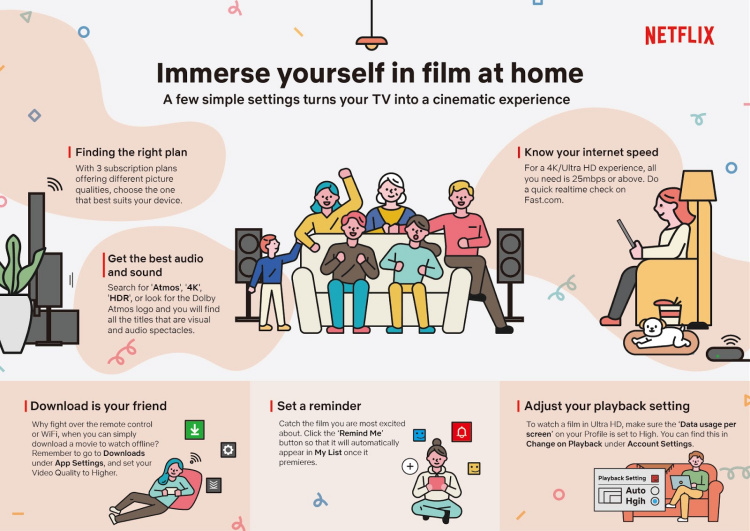
Whether you’re getting lost in the zombie apocalypse in #Alive or catching up on the latest Abang Action films like Project Power, a few minor checks and tweaks can go a long way to make sure you are getting the full immersive Netflix experience - regardless if you’re on your mobile, tablet or TV.
Get the ultimate Netflix viewing experience yang power in the comfort of your home with these 12 simple steps!
- Set a reminder on Netflix
Set a reminder directly on Netflix. We all live hectic lives, almost as hectic as Enola Holmes. Just search for Enola Holmes, click on the Remind me button. As soon as it’s on Netflix, it will automatically turn up in My List.
- Adjust Playback Settings
What makes action films like The Old Guard and Extraction so immersive is that they are shot in 4K video, Dolby Atmos sound, and Dolby Vision HDR. The non-jargon version of that basically means amazing video and audio quality, so you are blown away by the VFX, and can hear every gunshot, or the clink of bullet shells hitting the floor.
You can only get this when your data usage is optimised for HD/Ultra HD. Go to Account settings, hit the drop down on your Profile and hit Change on Playback settings. Make sure the “data usage per screen” on your Profile is set to High (this gives you HD/Ultra HD quality).
- Use Netflix in your preferred language
Enjoy the complete Netflix experience in Bahasa Melayu, English, Mandarin or Hindi - from sign-up to search, rows, collections and payment, available across all devices on your desktop, TV and mobile browsers.
Sign into your Netflix account on Netflix.com from your web browser on your mobile device. Select your profile and choose Manage profiles. Click on the Language drop down menu and select the language of your choice.
- Optimise your plan for 4K and Surround Sound
So you got yourself a 4K TV, and a Dolby Atmos soundbar or a 5.1 speaker system. To make it worth your hardware, make sure you are on the Premium Netflix plan. Premium not only lets your family watch on 4 screens at a time, it is also the only plan that gives you Ultra HD video and Dolby Atmos sound. To check what plan you’re on, just go to Account and look for Plan Details. To change, select Change Plan.
- Set up your Sound Right
You can get the immersive, theatre-like sound at home. However, if your TV is connected to your soundbar/music system through a 3.5mm jack, you are getting stereo and not surround sound (Sound still travels from left and right in stereo, while surround also goes behind you on a 5.1 setup; Atmos adds height and really makes the sound 3-dimensional). Use an HDMI cable and plug in to the ports labeled ARC on both your TV and speaker system. Or use an optical cable, often called Toslink. More details here.
- Check your Internet speed
To get 4K/Ultra HD, your broadband connection must be able to support it. Fear not though. All you need is 25mbps or above. Most home internet connections provide this. To be sure, do a quick realtime check here. Or: You can do a speed test straight from your Netflix mobile app, by going to More>App Settings and clicking on Internet Speed Test.
- Find more titles in 4K/ATMOS/HDR
Can’t get enough of stunning visuals and sound, and just looking for more films or series that will blow you away? Let search be your best friend. Just search for “Atmos”, “4K” or “HDR” in your search bar, and Netflix will filter out a list of titles that are a visual and audio spectacle. You’re welcome!
- Make downloads your friend
We’re all stuck at home. And that means everyone’s on the Wi-Fi; and the fight for control over the TV remote is real. Time to turn to your individual pocket cinema, your smartphone, by using Smart Downloads.
Play straight from your phone, or better yet, especially if the signal’s not great in your room, get closer to the router, download the movie, and you’re set. Before you start downloading, go to app settings, and under Downloads, set Video Quality to Higher.
- Downloading with SUBS / DUBS
When downloading movies on Mobile, make sure your downloaded movie has your preferred subtitle or dubbed language, or audio description (for the visually challenged to follow along).
Simply do this by checking that your preferred subtitle/dubbing/AD option is selected on the title before starting the download. You can even change the font, size, colour and background of your subtitles beforehand from Subtitle Appearance in Account Settings.
- Using Mobile Data
Somehow, the Wi-Fi is down. Or it’s just your service provider. Mobile data is getting cheaper, and streaming on Netflix is increasingly efficient. For these high-action, high-VFX movies, though, you will want to set mobile data usage to Maximum from your App Settings.
- Watching HD/HDR on your phone
Aren’t HD and HDR the same thing? Not really. 4K or HD is about the pixel density. In other words, they give you sharper, more detailed images. HDR or Dolby Vision is the colour and dynamic range of the images, so that your screen has more realistic light and colour. Phone screens are getting increasingly sophisticated. Most new iOS devices are capable of streaming in HD and HDR. As are select Android devices.
- Get in the Zone with your headphones
When watching Netflix on your mobile, you are not going to get 5.1 or Dolby Atmos. But using a good pair of wired or wireless earphones/headphones will give you really immersive stereo sound. Be like Keanu and get in the zone with your headphones!
Thanks for reading TechNavers and TechNave NewsByters. As always, stay tuned to TechNave.com and if you think your brand or PR should be in our latest issue of TechNave NewsBytes 2020, get into contact with our Editor-in-Chief.





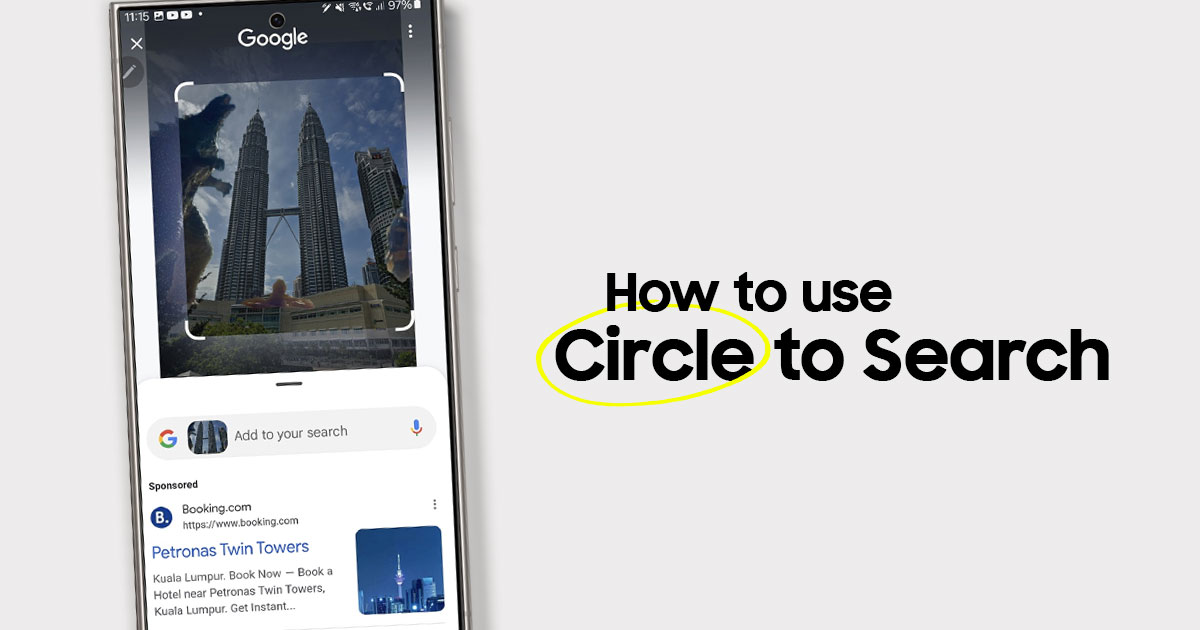
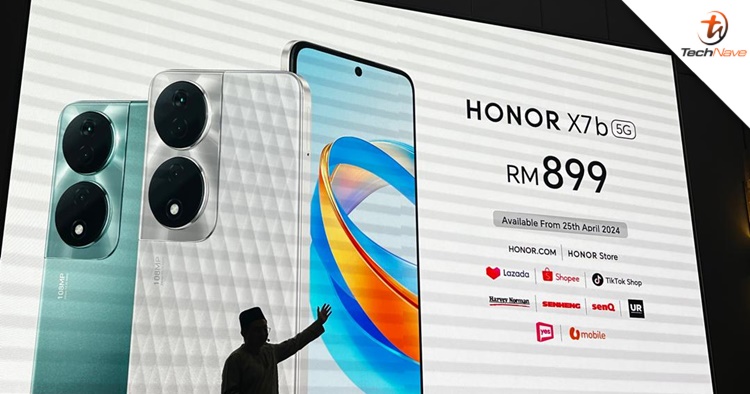
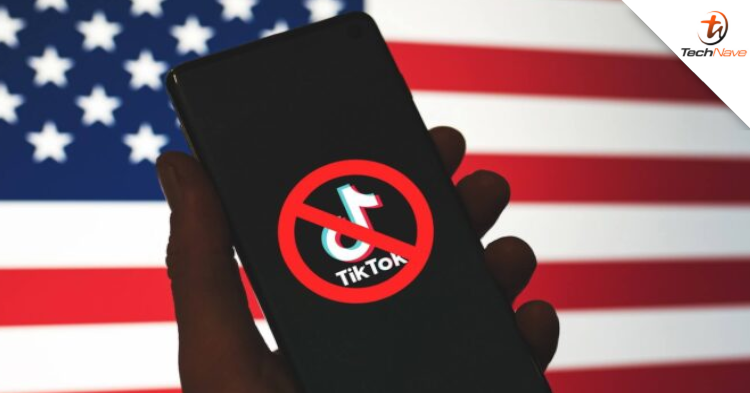

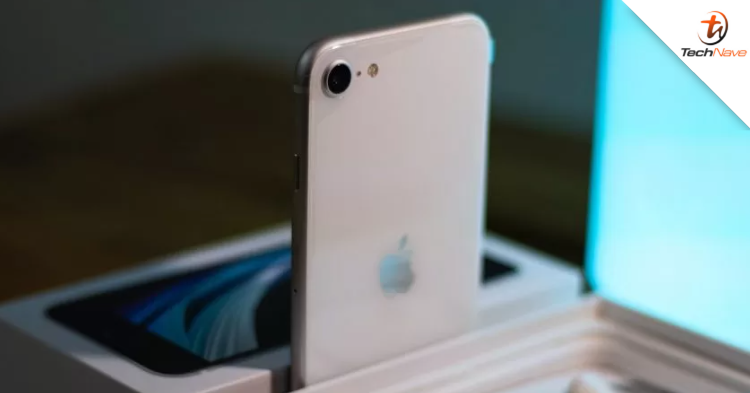
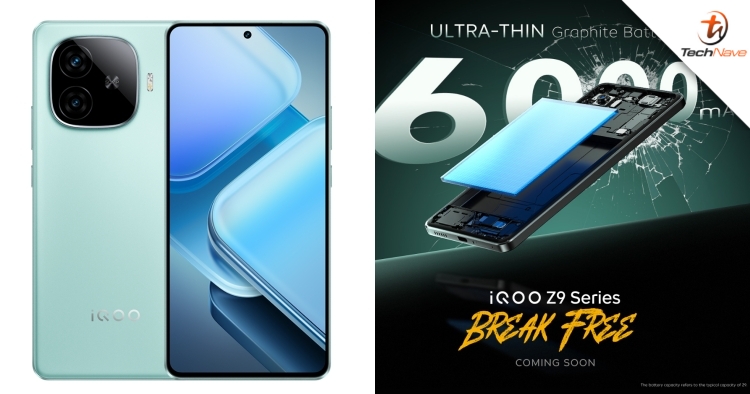
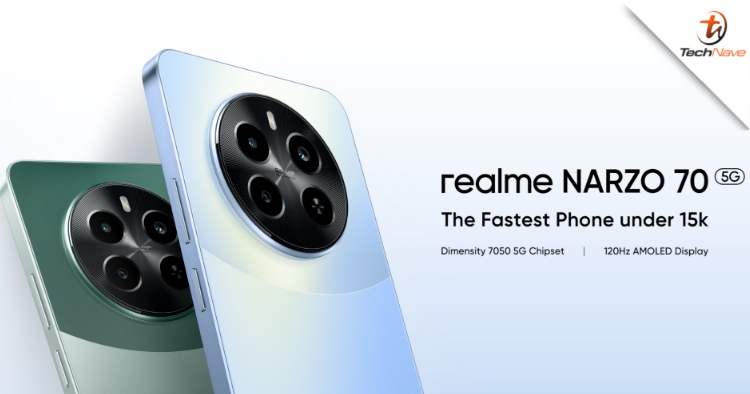
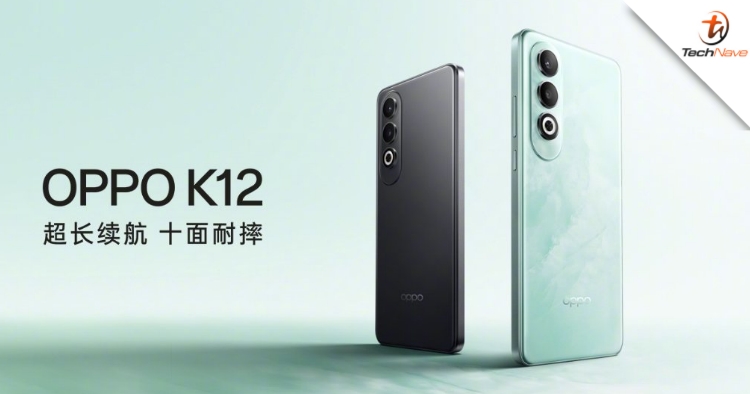
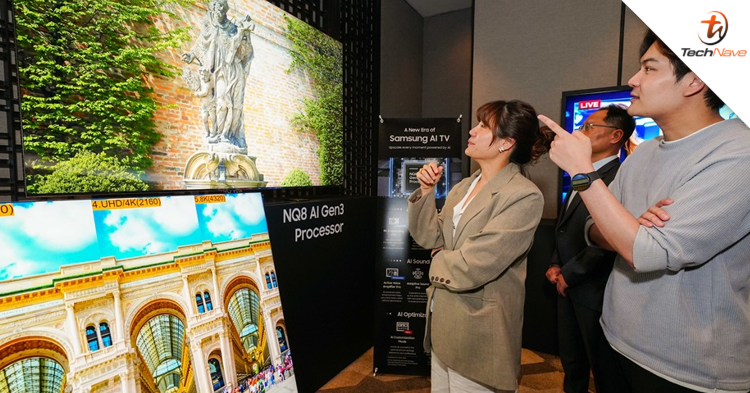

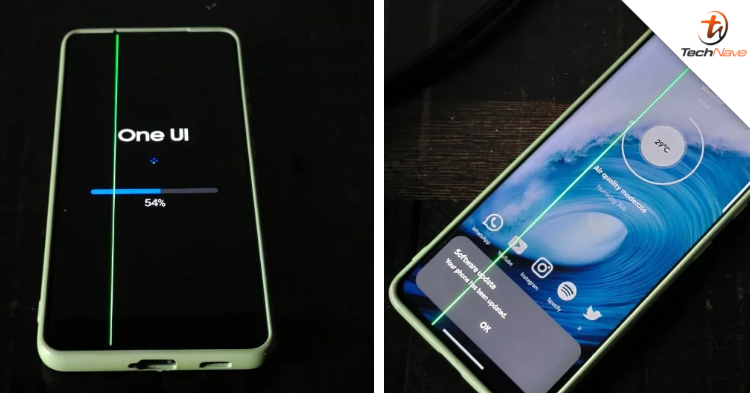

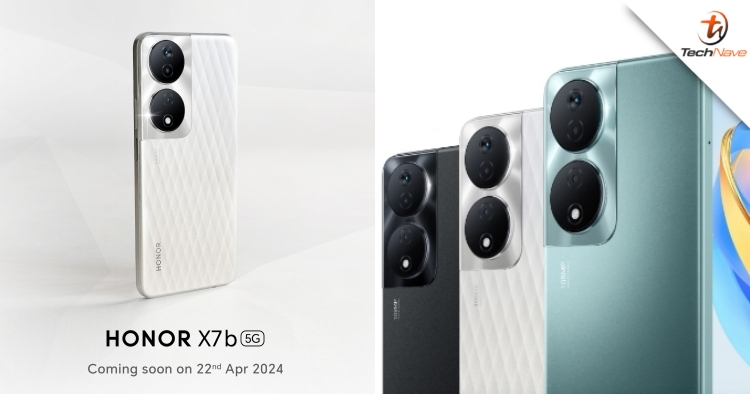
COMMENTS